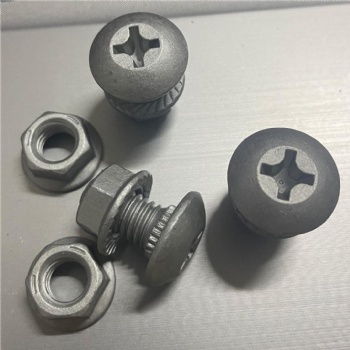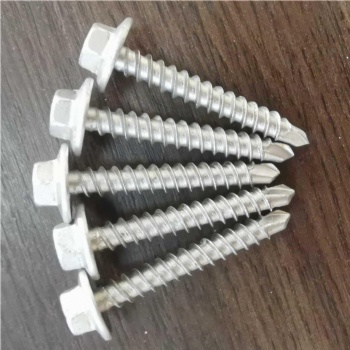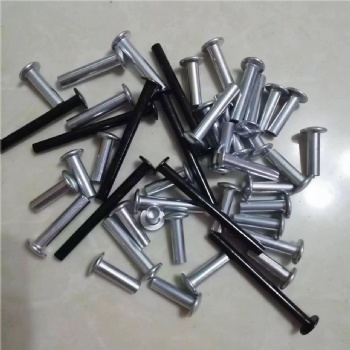News
Use of Stainless steel
Generally speaking, stainless steel is not easy to rust. In fact, some stainless steels have both rust resistance and acid resistance (corrosion resistance).
The stainless and corrosion resistance of stainless steel is due to the formation of chromium rich oxide film (passive film) on its surface. This rust resistance and corrosion resistance are relative. The test shows that the corrosion resistance of steel in weak medium such as atmosphere, water and oxidizing medium such as nitric acid increases with the increase of chromium content in steel. When the chromium content reaches a certain percentage, the corrosion resistance of steel changes suddenly, that is, from easy to not easy to rust, from non corrosion resistance to corrosion resistance.
There are many ways to classify stainless steel. According to the structure at room temperature, there are martensite, austenite, ferrite and duplex stainless steel; According to the classification of main chemical components, it can be basically divided into chromium stainless steel and chromium nickel stainless steel; It can be divided into nitric acid resistant stainless steel, sulfuric acid resistant stainless steel, seawater resistant stainless steel, etc. according to the use, and it can be divided into pitting resistant stainless steel, stress corrosion resistant stainless steel, intergranular corrosion resistant stainless steel, etc. according to the type of corrosion resistance; According to the functional characteristics, it can be divided into non-magnetic stainless steel, free cutting stainless steel, low temperature stainless steel, high strength stainless steel, etc. Stainless steel has been widely used in heavy industry, light industry, daily necessities industry and building decoration industry due to its excellent corrosion resistance, formability, compatibility and strong toughness in a wide temperature range.
austenitic stainless steel
Stainless steel with austenitic structure at room temperature. When Cr content is about 18%, Ni content is 8%~10%, and C content is about 0.1%, the steel has stable austenite structure. Austenitic chromium nickel stainless steel includes the famous 18Cr-8Ni steel and the high Cr Ni series steel developed by adding Cr, Ni content and Mo, Cu, Si, Nb, Ti and other elements. Austenitic stainless steel is non-magnetic and has high toughness and plasticity, but its strength is low, so it cannot be strengthened by phase transformation, and can only be strengthened by cold working. If S, Ca, Se, Te and other elements are added, it has good free cutting property. In addition to the corrosion resistance to oxidizing acid medium, such steel can also resist the corrosion of sulfuric acid, phosphoric acid, formic acid, acetic acid, urea, etc. if it contains Mo, Cu and other elements. If the carbon content in such steel is lower than 0.03% or contains Ti and Ni, its intergranular corrosion resistance can be significantly improved. High silicon austenitic stainless steel with concentrated nitric acid may have good corrosion resistance. Austenitic stainless steel has been widely used in all walks of life due to its comprehensive and good comprehensive properties.
Ferritic stainless steel
Stainless steel with ferrite structure in service. Chromium content is 11%~30%, with body centered cubic crystal structure. This type of steel generally does not contain nickel, and sometimes contains a small amount of Mo, Ti, Nb and other elements. This type of steel is characterized by high thermal conductivity, small expansion coefficient, good oxidation resistance, and excellent stress corrosion resistance. It is mostly used to manufacture parts that are resistant to atmospheric, steam, water and oxidizing acid corrosion. This kind of steel has some shortcomings, such as poor plasticity, obvious decrease of plasticity and corrosion resistance after welding, which limits its application. The application of secondary refining technology (AOD or VOD) can greatly reduce the interstitial elements such as carbon and nitrogen, so this kind of steel is widely used.
Austenitic ferritic duplex stainless steel
It is a stainless steel with about half austenite and half ferrite structures. With low C content, Cr content is 18%~28% and Ni content is 3%~10%. Some steels also contain alloy elements such as Mo, Cu, Si, Nb, Ti and N. This kind of steel has the characteristics of both austenitic and ferritic stainless steels. Compared with ferrite, it has higher plasticity and toughness, no room temperature brittleness, significantly improved intergranular corrosion resistance and welding performance, while maintaining the 475 ℃ brittleness of ferritic stainless steels, high thermal conductivity and superplasticity. Compared with austenitic stainless steel, it has higher strength and better resistance to intergranular corrosion and chloride stress corrosion. Duplex stainless steel is a nickel saving stainless steel with excellent pitting corrosion resistance.
Martensitic stainless steel
The stainless steel whose mechanical properties can be adjusted through heat treatment is a kind of hardenable stainless steel. The typical brand is Cr13, such as 2Cr13, 3Cr13, 4Cr13, etc. The hardness after fire cleaning is high, and different tempering temperatures have different strength and toughness combinations, which are mainly used for steam turbine blades, tableware, and surgical instruments. According to the difference of chemical composition, martensitic stainless steels can be divided into martensitic chromium steels and martensitic chromium nickel steels. According to different structures and strengthening mechanisms, it can also be divided into martensitic stainless steels, martensitic and semi austenitic (or semi martensitic) precipitation hardening stainless steels and maraging stainless steels.
Chromium nickel molybdenum stainless steel
Stainless steel with chromium, nickel and molybdenum as the main alloy elements. For example, 00Cr17Ni14Mo2, 00Cr19Ni13Mo3, 0Cr18Ni16Mo5 are austenitic stainless steels, and 0Cr26Ni5Mo2 is austenitic ferritic stainless steels. Cr Ni Mo stainless steel is resistant to both oxidizing and reducing media corrosion; It is resistant to both uniform corrosion and local corrosion. Chromium is the basic element for stainless steel to obtain corrosion resistance. Chromium is beneficial to general corrosion, pitting corrosion and crevice corrosion, and to intergranular corrosion and stress corrosion; Molybdenum is beneficial to general corrosion, pitting corrosion and crevice corrosion. The combination of chromium and molybdenum greatly improves the corrosion resistance of stainless steel, and nickel is the most effective element to improve the toughness of stainless steel.
In addition to electroplating, most of the chromium in the world is used to make various stainless steel alloys. At first, the steel containing only 12.8% chromium was called stainless steel. Later, many new elements were added to produce better performance. Such as nickel, molybdenum, titanium, niobium, boron, copper, vanadium and rare elements. Now stainless steel has developed into a large family of alloys, with hundreds of varieties.
Categories
Contact Us
- +86-13966788007
- +86-13966788007
- [email protected]
- Skype
- 86-13966788007



